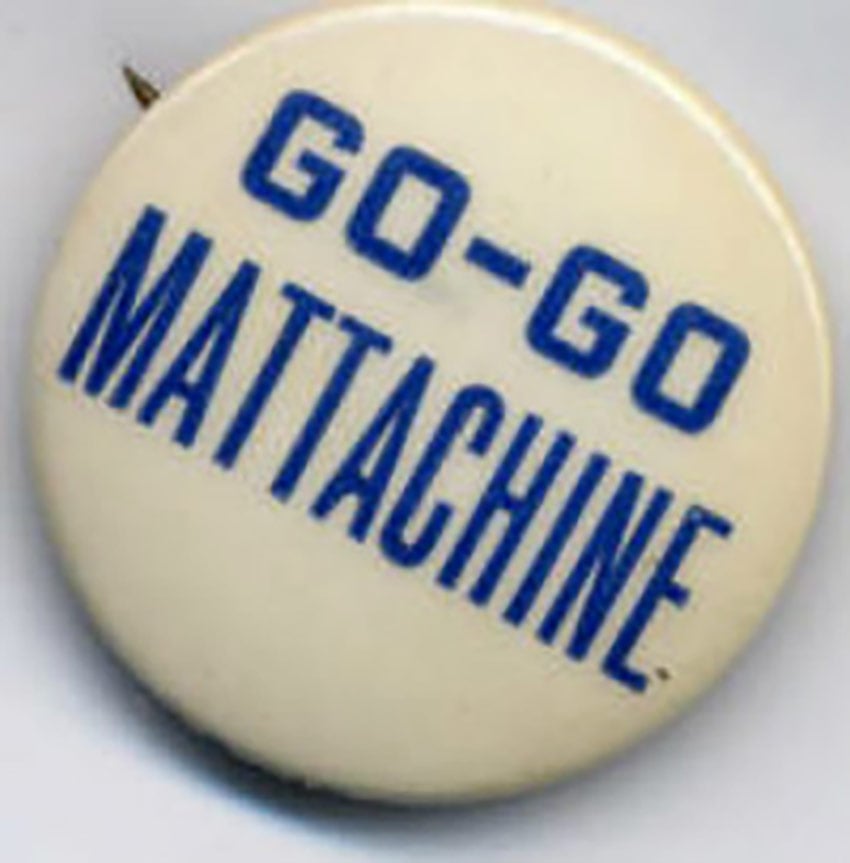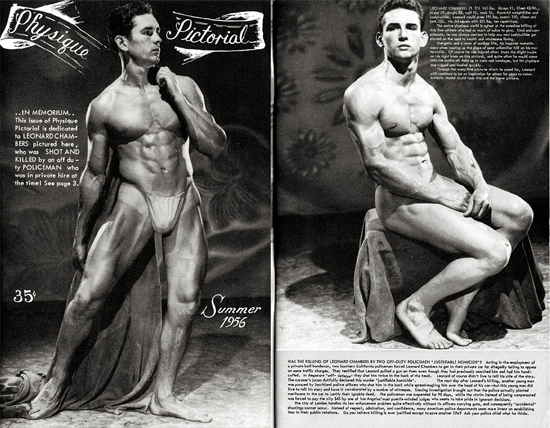Bob Mizer on: Sexual Mores
“Whereas many expressions are now accepted which would never have been tolerated in Victorian times, and each generation demands increasingly greater...
3 min read
Bob Mizer Foundation : Mar 16, 2016 3:20:00 PM

Before the Grecian Guild beckoned closeted gay men to meet one another and engage in cathartic discussions about their deepest desires, there was the Mattachine Society.
The organization, conceived as the Mattachine Foundation in 1950 and spearheaded by budding gay rights activist and communist Harry Hay, was originally comprised of only seven men who held meetings in secret locations. According to historian and Hay biographer Will Roscoe, the name ‘Mattachine’ referred to the Mattachines, a group of men who traveled from one community to another, performing dramas and singing ballads in which social justice was the central theme.
The society was headquartered in Los Angeles for the first six years of its existence, moving its national headquarters to San Francisco in 1956. Within only three short years of its founding, attendance at the foundation’s meetings spiked, and Hay began hosting social events, fundraisers, and even launched a regular newsletter.
“What’s more, the Mattachine Society was incredibly progressive in terms of acceptance of minority members, even in the early 1950s,” said Dennis Bell, founder and president of the Bob Mizer Foundation. “Not only did the society advance the concept of gay consciousness, but it also openly welcomed blacks, Hispanics, Asians … everyone.”
Of course, that made the society an easy target for conservatives, evangelicals and politicians. At the height of McCarthyism, the House Un-American Activities Committee, and the Red Scare, it was damaging enough to self-identify as a communist – add the adjectives ‘gay’ and ‘progressive’ to the list, and you were certain to draw the attention and the ire of those in positions of authority. The group at the very least caught the attention of the FBI, which amassed a file of hundreds of pages detailing the activities of the group and its members throughout the 1950s and 1960s.
 “Mattachine holds it possible and desirable that a highly ethical homosexual culture emerge, as a consequence of its work, paralleling the emerging cultures of our fellow minorities … the Negro, Mexican, and Jewish peoples,” read the society’s Statement of Missions and Purposes, drafted in the spring of 1951.
“Mattachine holds it possible and desirable that a highly ethical homosexual culture emerge, as a consequence of its work, paralleling the emerging cultures of our fellow minorities … the Negro, Mexican, and Jewish peoples,” read the society’s Statement of Missions and Purposes, drafted in the spring of 1951.
The society was embroiled in political activism almost from the start. In 1952, one of its members became the victim of entrapment by the Los Angeles vice squad. The society’s founding members sprang into action, eventually claiming a solid victory through an aggressive public relations campaign, publishing newsletters, leaflets, raised funds and stepped up its meetings and outreach efforts. When the jury became deadlocked and the case was dismissed, the society’s support strengthened and swelled.
“That harmony didn’t last long, though,” Bell noted. “The society’s founders sent out a survey shortly after the trial in which they asked local, state and national politicians their opinions of issues related to homosexuality. As one might imagine, the results of the survey revealed that the word ‘homosexual’ and the word ‘communist’ were synonymous in the eyes of these public figures.”
Frightened that they would be labeled as communist sympathizers, the more conservative members of the society sponsored their own convention in an attempt to distance themselves from their more progressive (some called then ‘subversive’) counterparts. The organization’s more liberal and radical members, meanwhile, hosted their own event, arguing that gay people were a minority and only wished to express their own sexual desires.
The group’s founding members, including Hay himself, were mortified by the dissention among the society’s two warring factions. Instead of being witness to more negative attention being drawn to the society, they abruptly resigned in the spring of 1953, and the conservative members took over the reins of leadership.
The Mattachine Society never recovered from the shock waves sent through the group. Meeting attendance steadily dwindled throughout the late 1950s, even as new chapters continued to be founded in major cities across the country.
The Mattachine Society’s influence throughout the first half of the 1960s has been contested by more left-wing supporters, who point to the fact that the organization continued to publish magazines pamphlets and press releases that, as they saw it, influenced public opinion on the subject of the homosexual’s place and role in society. But as the late 1960s brought about more radical agendas and aggressive activism in other social circles, many felt the Mattachine Society had finally outlived its usefulness.
“Many within the organization actually believed the Mattachine Society was too traditional, and that its leaders were afraid of confrontation,” Bell says. “They thought the gay rights movement needed a newer, fresher face, and they thought the society just couldn’t adapt to the changing times.”
In the end, internal strife ultimately led to the dissolution of the group shortly after the Stonewall riots of 1969. The society did manage to emerge from the annals of LGBT history decades later, however – in 2011, the Mattachine Society was revived as a chapter in Washington, D.C., and is dedicated to the research of LGBT political history.
“Magazines like Bob Mizer’s ‘Physique Pictorial’ were a way for gay men to appreciate the beauty of the male form in private as early as the late 1940s and early ‘50s, and the popularity of organizations like the Mattachine Society was the next logical step in the evolution of gay consciousness,” Bell says. “That evolution has been made possible because of men who, having enjoyed those magazines, then bravely sought out the company of other like-minded men and form a bond based on shared interests.”

“Whereas many expressions are now accepted which would never have been tolerated in Victorian times, and each generation demands increasingly greater...

Those AMG patrons who were fortunate enough to live in the Los Angeles area during the mid-1960s and early 1970s were likely familiar with the Park...

It seems the LAPD, that stronghold of racial profiling and police brutality, has been playing fast and loose with its night stick for decades now....

Bob Mizer counted many people among his friends and acquaintances. His compound -- especially in the later years of his career -- was always buzzing...